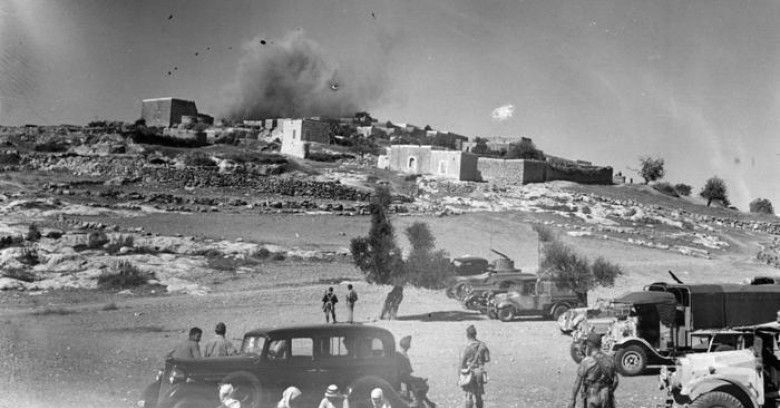RAMALLAH,
April 5, 2011 (WAFA) - Marking the occasion of Palestinian Children Day on
April 5, the Palestinian Central Bureau of Statistics (PCBS) Thursday said that
children under the age of 18 make up almost 2 million of a total 4.29 million
Palestinian population in the West Bank and Gaza Strip.
Based on the
results of the Population, Housing and Establishment Census-2007, the estimated
number of children in the Palestinian Territory totaled to 2.04 million out of
4.29 million individuals, the total population in the Palestinian Territory, in
the mid of 2012, said the PCBS.
The
percentage of individuals under the age 18 is still high which is about 47.6%
of the total population is, it said.
Demographic
statistics and trends in the Palestinian society showed that the children will
constitute the majority for several coming years due to high fertility rate of
the Palestinian women and low infant mortality rates.
A
Palestinian family is also formed at early ages since the females mean age at
first marriage in the West Bank was 20.0 years and 24.6 years for males in
2011.
The PCBS
said that 11 out of 100 under-five children suffer chronic malnutrition in
2012, including 11.5% in the West Bank and 10.4% in Gaza Strip. Hebron
governorate had the highest rate at 16.7% compared to the rest of the
governorates.
In 2010,
3.7% of children aged less than five years in Palestine were underweight; 3.9%
in the West Bank and 3.5% in the Gaza Strip.
On the level
of governorates, the rate was 5.6% for Hebron, 4.8% for Ramallah and Al-Bireh,
and 3.9% for Jerusalem. The underweight rate in Deir Al-Balah in the Gaza Strip
reached 4.4% compared to 4.3% in North Gaza and 4.2% in Rafah governorates.
Based on
Ministry of Health data for 2011, the leading cause of infant mortality in the
West Bank was respiratory tract infections with 39.7%; 42.0% for male children
and 37.0% for female. This was followed by infant mortality caused by premature
and low birth weight with 16.2%; 17.0% for male children and 15.2% for female
children.
Congenital
anomalies caused death in 15.9% of cases; 13.6% for male children and 18.5% for
female children. Septicemia was the cause of 15.3% of infant mortality; 15.3%
for male children and 15.0% for female children.
According to
data from the Ministry of Health for 2011, the leading cause of deaths among
children under five years in the West Bank was conditions in the prenatal
period totaling 36.7%; 37.8% for male children and 35.3% for female children.
In 2010,
19.4% of children aged 6-59 months had anemia; 25.6% in the Gaza Strip and
13.4% in the West Bank. Qalqilya governorate reported the highest rate of
anemia among children with 32.3%, followed by Salfit 19.7% and Nablus
governorate 19.4%. In the Gaza Strip, Deir Al-Balah governorate reported the
highest rate of anemia of 41.4%, followed by Gaza 31.3% and Khan Yunis 21.8%
governorates.
Poverty data
indicated that 14.5% of households in the West Bank suffered from poverty in
2011; 15.7% of households with children and 10.5% of households without
children. In the Gaza Strip, 32.6% of households suffered from poverty in 2011;
34.6% of households with children and 21.1% of households without children.
In 2011,
27.2% of children in Palestine were poor; 18.4% in the West Bank and 39.3% in
the Gaza Strip.
The results
of the Labor Force Survey of 2012 showed that 4.1% of all children (10-17 years)
were in paid or unpaid employment, of which 7.5% are males and 0.6% are
females; 5.8% in the West Bank and 1.5% in the Gaza Strip in 2012.
2.2% of
children who attend school are employed; 3.4% in the West Bank and 0.3% in the
Gaza Strip; 4.0% males and 0.5% females while 28.5% do not attend school; 34.3%
in the West Bank and 18.2% in the Gaza Strip, of which 38.5% are males and 2.8%
are females.
About 56.9%
of working children in Palestine work for their families as unpaid workers;
95.5% females and 54.0% males. Around 37.4% are paid and work outside the
family; 2.6% females and 40.0% males and 5.6% are employers or self-employed.
Moreover,
38.5% of working children in Palestine work in agriculture; 42.9% in West Bank
and 12.2% in Gaza Strip, while 30.0% work in commerce, restaurants and hotels;
27.9% in West Bank and 42.5% in Gaza Strip.
Additionally,
31.5% work in other economic activities such as the recycling industry,
construction, transportation or services sectors; 29.2% in West Bank and 45.3%
in Gaza Strip.
T.R./F.R.










